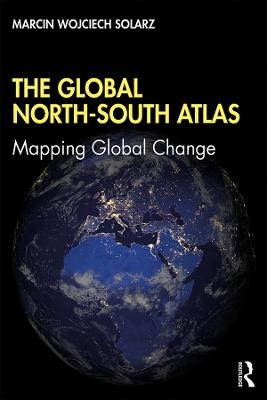
The Global North-South Atlas
Mapping Global Change
Seiten
2019
Routledge (Verlag)
978-1-138-58884-4 (ISBN)
Routledge (Verlag)
978-1-138-58884-4 (ISBN)
This innovative atlas uses a range of colourful maps, charts, and regional profiles to argue that the international community needs to think beyond the established 'North-South Line'. It is a perfect resource for geography, politics, economics, and development students studying global divisions.
This innovative atlas deconstructs the contemporary image of the North–South divide between developed and underdeveloped countries which was established by the 1980 Brandt Line, and advocates the need for the international community to redraw the global map to be fit for the 21st century.
Throughout the book a range of colorful maps and charts graphically demonstrate the ways in which the world has changed over the last 2,000 years. The atlas first analyzes the genesis and characteristics of the Brandt Line’s North–South divide, before going on to discuss its validity through the centuries, especially before and after 1980, and demonstrating the many definitions and philosophies of development that exist or may exist, which make it difficult to define a single notion of a Global North and South. The book concludes by proposing new schemes of categorization between developed and developing countries which might better fit our contemporary global society.
This book will serve as a perfect textbook for students studying global divisions within geography, politics, economics, international relations, and development departments, as well as being a useful guide for researchers, and for those working in NGOs and government institutions.
This innovative atlas deconstructs the contemporary image of the North–South divide between developed and underdeveloped countries which was established by the 1980 Brandt Line, and advocates the need for the international community to redraw the global map to be fit for the 21st century.
Throughout the book a range of colorful maps and charts graphically demonstrate the ways in which the world has changed over the last 2,000 years. The atlas first analyzes the genesis and characteristics of the Brandt Line’s North–South divide, before going on to discuss its validity through the centuries, especially before and after 1980, and demonstrating the many definitions and philosophies of development that exist or may exist, which make it difficult to define a single notion of a Global North and South. The book concludes by proposing new schemes of categorization between developed and developing countries which might better fit our contemporary global society.
This book will serve as a perfect textbook for students studying global divisions within geography, politics, economics, international relations, and development departments, as well as being a useful guide for researchers, and for those working in NGOs and government institutions.
Marcin Wojciech Solarz is Professor in the Faculty of Geography and Regional Studies at the University of Warsaw, Poland.
Introduction: The Brandt Line: political or developmental boundary; 1 Mapping global change: differences in development and wealth from the 1st to the 21st century; 2 Different philosophies of development: different development boundary lines; 3 Towards a new global line?; 4 Conclusions; Bibliography; Index
| Erscheinungsdatum | 08.11.2019 |
|---|---|
| Zusatzinfo | 147 Line drawings, color; 147 Illustrations, color |
| Verlagsort | London |
| Sprache | englisch |
| Maße | 174 x 246 mm |
| Gewicht | 467 g |
| Themenwelt | Naturwissenschaften ► Biologie ► Ökologie / Naturschutz |
| Naturwissenschaften ► Geowissenschaften ► Geografie / Kartografie | |
| Sozialwissenschaften ► Politik / Verwaltung | |
| Sozialwissenschaften ► Soziologie ► Spezielle Soziologien | |
| Wirtschaft ► Volkswirtschaftslehre | |
| ISBN-10 | 1-138-58884-9 / 1138588849 |
| ISBN-13 | 978-1-138-58884-4 / 9781138588844 |
| Zustand | Neuware |
| Haben Sie eine Frage zum Produkt? |
Mehr entdecken
aus dem Bereich
aus dem Bereich


